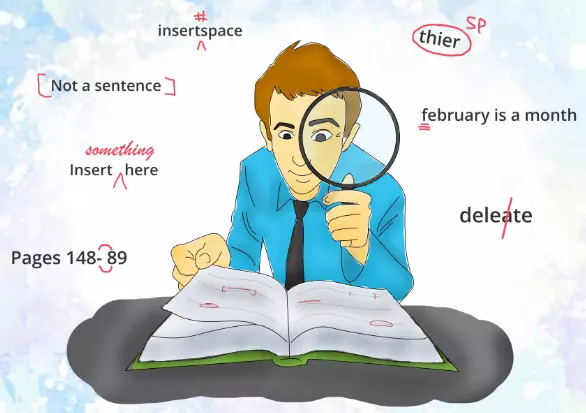How to Write a Long Essay, Term Paper or Research Paper

A long essay is an essay longer than 3 pages. This varies with the level of education. Some college instructors will view a five-page essay as short and others as average.
The phrase ‘long essay’ can be used to refer to the number of words, the number of pages, and sometimes the number of paragraphs. Most instructors usually clarify how long essays should be before issuing them.
What Is A Long Essay In Research?
A long essay in research is a ten-page or more essay that analyses, interprets, and compares researched ideas to the ideas of the writer.
Research papers are usually longer than academic essays. They are usually more detailed and test writing and scholarly research skills.
People Also Read: Essay Writing Topics with Answers:21 Examples in English
How to Write Long Essays

Most students complain that it is overwhelming to write long essays. The stress that comes with writing long essays contributes to many students wanting to put them off. Tackling long essays can become easy by following the following steps:
1. Pick a Topic
When granted the freedom to choose a topic, pick a broad and specific one. It is easy to find and write about a broad topic.
Topics with scarce research material generate little content and are not suitable for long essays.
One may likely end up getting stranded halfway into the essay with nothing more to write about on a topic. For example, the effects of Racism in America in the 2000s is a broader topic than the effects of racism in America in 2004.
2. Start your Research
Researching on a long essay can take hours and days. Thorough research is important in the formulation of a thesis. It makes it easy to determine the sources that are more important and valuable to your topic. The more sources you get the better and longer your essay will be.
3. Write a Thesis
The thesis statement is crucial because its shapes your entire essay. The thesis statement you formulate should be specific.
It should outline the main argument that you will try making in the essay. Use the thesis to explain why the question you want to answer is important.
In long essays, thesis statements should appear at the end of the first paragraph or on the second paragraph.
4. Finish your Research
With the thesis statement already established, continue doing research. The research should focus on the points that support the thesis statement you have come up with.
Any point that does not align with the thesis statement is not meant for your essay. All the sources you use for research should help develop your thesis statement. The sources should be credible and authentic to strongly support the thesis.
5. Make an Outline
An outline helps you organize thoughts and plan how you will write your essay. Without outlines, you are likely to get lost in the middle of your essay.
With an outline, writing is easy and fast with an organized flow of ideas. The more detailed your outline is the more ease you will have when writing the essay.
6. Write the Essay
Start writing your essay. Keep your head down and avoid distraction. Read through your writing to make sure that your ideas flow and paragraphs connect.
7. Proofread and Edit

You should read your paper out loud when proofreading.
This helps you notice any grammatical, punctuation, or paraphrasing errors in your essay.
You can choose to edit the errors as you read or write them down and correct them once you are done proofreading.
People Also Read: Essay Writing Titles: Being Creative Without Topic Generators
How to Balance your Points in a Long Essay
Formulate a Thesis

To balance your points in an essay you first need a thesis statement. A thesis statement will set the tone of how your points will be balanced.
With the thesis, you will be able to understand your essay better. This in turn helps you balance your points.
Write the introduction paragraph
Introduce your essay in the best way possible. Make it clear what you will talk about in your essay. Do not use fancy language that the reader will find hard to understand. At the end of the introduction paragraph write the thesis statement.
Supportive paragraphs
These are paragraphs that make up the body of your essay. They explain all points in your essay. Each point should be represented in its paragraph.
The first sentence of each paragraph is the topic sentence that states the point you will talk about. Explain the points exhaustively as the paragraph progresses.
People Also Read: Linking Words for Essay Writing: Useful Paragraph Phrases
Conclusion
The conclusion summarizes everything you have talked about in the essay. If readers happen to read the conclusion only they should grasp everything about your essay.
If writing a conclusion is hard, you can use your thesis statement as the conclusion because it also presents what your essay is all about.
Tips on How to Format a Long Essay
Instructors give long essays to their students to test their writing skills. An example of such a long task is writing a 4000-word essay that can take someone quite some time. The standard essay format is introduction, body, and conclusion.
The format for long essays includes two introduction paragraphs, 3 ideas in the body with each idea presented in four paragraphs, and a conclusion. This gives the writer the chance to achieve the given length.
People Also Read: Is Using an Essay Writing Service Cheating: It’s Legal
How to Make an Essay Long the Smart Way

Essays can be made long in the following way:
1. Expanding descriptions
Descriptions are very important, especially in descriptive essays.
Even if you have defined them you can add more information to make them more detailed.
2. Enhancing transitions
Transitions not only enable the reader to smoothly navigate through your points but also add length to your essay.
Additionally, great transitions make your essay better and are signs of a great writer.
This is different for short essays. Read more on how to write short essays to know why long transitions may not be included.
3. Expanding paragraphs
Go through your essay and find points that are not explained clearly and explain them clearly.
You can’t know everything about a topic. There will be always relevant information to add to the points of your essay. You can explain the basics if you did not do so and define important terms as well.
4. Adding the Introduction
No rule states that introductions should be short. They should be detailed because they tell the reader what to expect and set the tone for your essay. If you rushed over the introduction revise it and add more ideas to make it detailed and catchier.
5. Make sure that you have Included Everything
Revisit your outline and check whether you have included all the points you wanted to in the essay. If not, add them. Sometimes you may rush when writing the essay and forget to include all the points you intended to.
6. Checking the Assignment Again
Reading the assignment again can help you think of new ideas to include in your essay. This is because you may not have exhausted everything on the topic and reading the assignment again can open up your mind to a new thinking dimension. Also, you may have missed something in the instructions that you should add to the essay.
7. Add Quotations
Quotations help show the reader that you understand what you are writing about. You can bring in two quotes from famous writers to support your arguments. Always remember to cite and reference them to avoid plagiarism.
8. Asking a Friend what is Missing
After doing all of the above and still not achieving the length you want, ask a friend to read your essay. They will help you identify what is missing and unclear in your work. It is not easy receiving constructive criticism in your work but that is one way to make it better.

When not handling complex essays and academic writing tasks, Josh is busy advising students on how to pass assignments. In spare time, he loves playing football or walking with his dog around the park.




